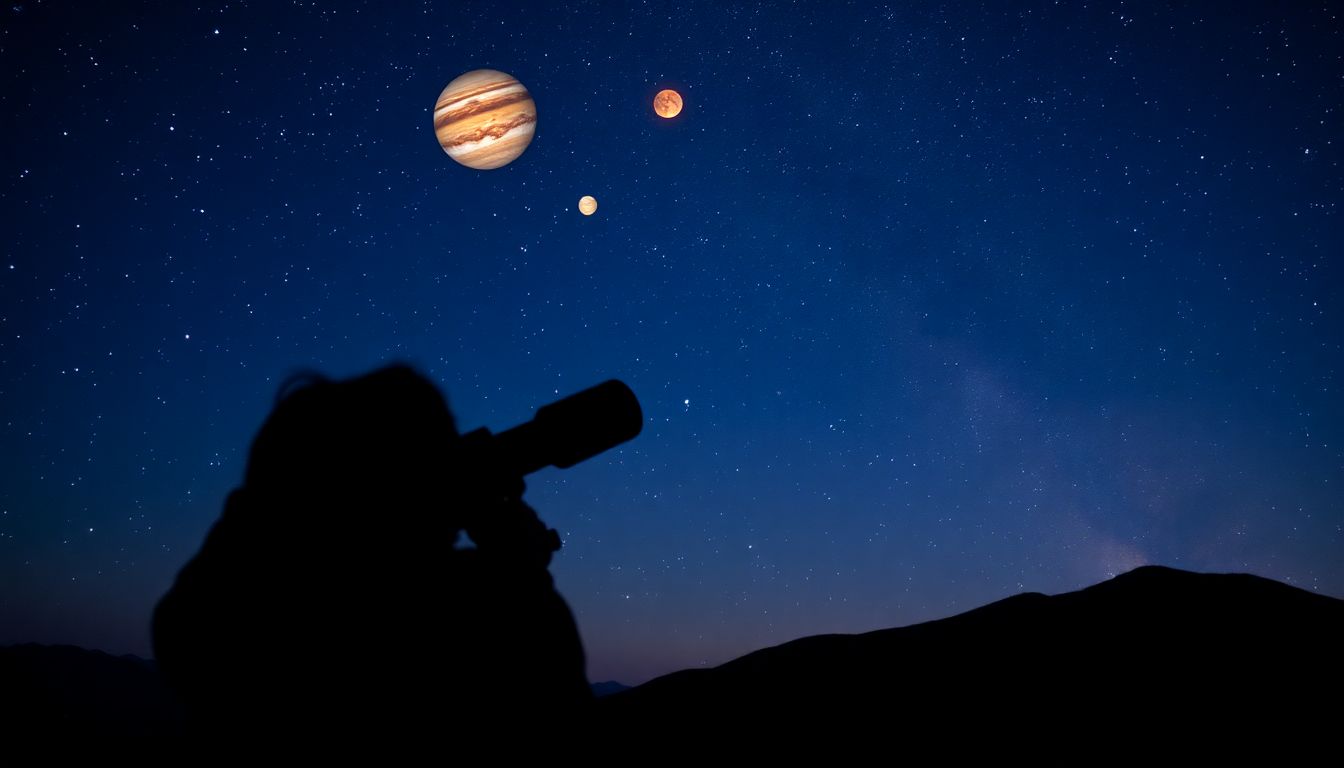
How to Tell Planets from Stars at Night: A Complete Guide for Amateur Skywatchers
Stargazing is one of the oldest hobbies. Many people look up at the night sky and wonder: is that a star or a planet? With thousands of lights shining above, telling them apart can seem tricky at first. But learn the right tips, and you’ll soon identify bright planets hidden among stars.
Knowing the difference matters. It can make your viewing more fun, help you learn about space, and even improve your astrophotography skills. In this guide, you’ll discover how to spot planets versus stars using simple tricks, tools, and observations.
Understanding the Basics: What Are Planets and Stars?
The Nature of Stars
Stars are giant balls of hot plasma. They shine because of nuclear fusion happening deep inside. This process makes them glow brightly in the sky. Our sun is a star, and it’s the biggest object in our solar system. Bright, visible stars like Sirius and Betelgeuse are famous examples seen from Earth.
The Nature of Planets
Planets orbit stars, including our own Sun. They don’t produce their own light but reflect the star’s rays. In our solar system, bright planets like Venus, Mars, Jupiter, and Saturn are visible to the naked eye. Each one has unique features you can spot with some practice.
Visual Differences in the Night Sky
Brightness and Steadiness of Light
Most planets appear brighter than many stars. They shine steadily without flickering much. Stars, on the other hand, look like twinkling lights. That flickering happens because Earth’s atmosphere causes their light to bend unevenly.
Movement and Position
Try watching these lights over several nights. Planets slowly move against the background of stars. Their position changes noticeably. Stars stay fixed relative to each other, forming familiar patterns called constellations.
Color and Glow
Some planets have distinct colors. Mars appears reddish, while Saturn often looks yellowish. Stars show colors based on their temperatures: blue, white, yellow, or red. These hues help differentiate celestial objects.
Using the Sky to Identify Planets Versus Stars
Star Charts and Smartphone Apps
Star charts show where planets and stars are at any date and time. Download apps like SkyView or Stellarium. They use your phone’s location to overlay planets on the real sky, making spotting easier.
Recognizing the Brightest Objects
Without a telescope, you’ll mainly see a few bright objects. Venus, Mars, Jupiter, and Saturn are the brightest planets. Bright stars like Sirius are also visible, but planets tend to shine brighter and stand out.
The Ecliptic Plane and Planetary Positions
Planets follow a narrow band in the sky called the ecliptic. They usually line up along this path through the constellations. Stars appear randomly scattered, unlike the orderly flow of planets.
Key Techniques for Identification
Timing and Observation Consistency
Observe the same parts of the sky across several nights. Planets will shift position, sometimes significantly. If a light moves relative to fixed stars, it’s a planet. Best times are during opposition—when planets are closest and brightest.
The “Twinkle” Test
Stars flicker more than planets. Wait and watch; if the light twinkles rapidly, it’s likely a star. Planets usually glow with a steady light, though atmospheric conditions can sometimes cause minor flickering.
Use of Binoculars and Telescopes
A good binocular or small telescope enhances your view. You can spot Jupiter’s moons or the rings of Saturn, confirming their planetary nature. These details are impossible to see with the naked eye.
Real-World Examples and Case Studies
Identifying Venus in the Evening or Morning Sky
Venus glows brightly just before sunrise or right after sunset. It’s often called the “Morning Star” or “Evening Star.” Its brightness and position close to the Sun make it unique.
Tracking Mars’ Movement Over Weeks
Mars changes position noticeably over weeks. Sometimes it appears reddish and brighter than most stars. Watching its movement helps confirm it’s a planet.
The Brightness of Jupiter and Its Moons
Jupiter is one of the brightest objects in the night sky. Using binoculars, you can see its four largest moons—Io, Europa, Ganymede, and Callisto—lining up near the planet.
Expert Tips and Additional Resources
- Take notes or photos on different nights to track movement.
- Learn to read star charts for your location.
- Join local astronomy clubs—they often host star parties.
- Always check weather conditions; clear skies are best.
- Use apps or websites like Heavens-Above for the latest planetary positions.
Conclusion
Being able to tell planets from stars makes your night sky adventures more rewarding. Brightness, steadiness, and motion over time are key clues. Combining these methods with technology can make your discoveries easier. With practice, you’ll see the sky in a new way, turning a simple glance into a mini space adventure.
Key Takeaways
- Planets look brighter, steadier, and don’t twinkle like stars.
- Observe how objects change position over multiple nights.
- Use star charts and smartphone apps to find objects.
- Binoculars and telescopes reveal more details, confirming planets.
- Regular stargazing builds your confidence and skills.
Start observing tonight! Practice these tips, and soon you’ll confidently tell planets from stars in the night sky. Happy stargazing!

